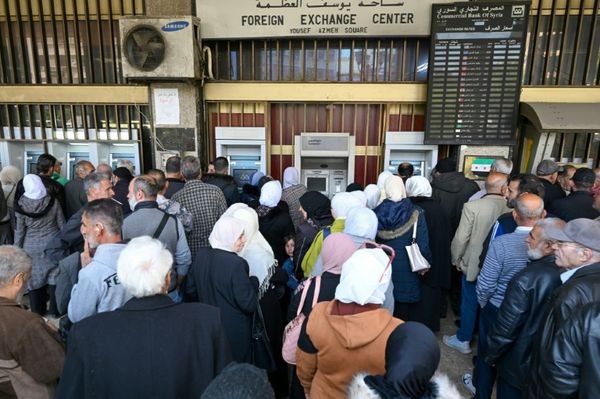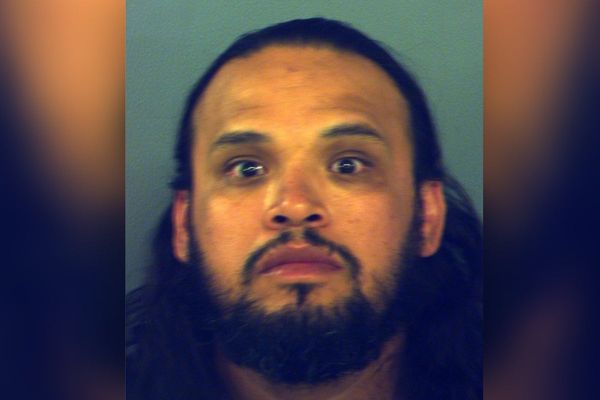
President Donald Trump has wasted little time since returning to the White House carrying through on his vows to stop certain immigrants from coming to the United States and to remove many who are here. Over the past months, Capital & Main has explored and reported on migrants and asylum seekers who’ve been detained at the border, examining their fate and the rules that keep them in custody. This is the first in a two-part series looking at the history of mass deportations in the United States and what it portends for the future.
Pedro Rios’ paternal grandparents were both born in the United States, yet the government forced them to move to Mexico in the 1930s. They were teenagers at the time.
Rios, the director of the American Friends Service Committee’s U.S./Mexico Border Program, guesses that government officials sent his grandparents on trains to the border, but he doesn’t know the story. That’s because neither of them talked about the experience.
He said his grandmother seemed to be unable to forgive the part of herself that led her to be expelled from her home country.
“She despised being Mexican to some extent,” Rios said. “I think it was because of the discrimination that she lived through.”
Over its history, the United States has repeatedly worked to exclude and remove people in moments when xenophobic, nativist and white supremacist voices have been able to sway public opinion towards fear, including the exclusion of Chinese immigrants, forced removals of Mexicans and Mexican Americans and the relocation and incarceration of Japanese and Japanese Americans. The result of those efforts was often generational trauma, with elders unable to talk about what they went through, as in the case of Rios’ family.
Now, with promises of mass deportation from the Trump administration, many academics see that history poised to repeat itself.
Roberto D. Hernández, a professor of Chicano and Chicana studies at San Diego State University, said the racialization of Mexican and Mexican American people during deportation efforts of the 1930s and 1950s is similar to the messaging from white supremacist groups today.
He pointed to a letter that circulated in Oregon in December calling for white residents to identify and report people they suspect of being undocumented, as part of a coming “brown round-up” under President Donald Trump. He said it contained the same messages of anti-Mexican racism that buoyed the movement in the ’30s.
With reports of Border Patrol agents carrying out mass arrests in Bakersfield even before the inauguration, fear has grown heavy in immigrant communities, and in the days since Trump took office, an increase in immigration arrests is further stoking that anxiety.
“This kind of fear has long-term generational consequences,” said Kevin Johnson, a professor of law and Chicano studies at the University of California Davis.
Rios has witnessed that first hand.
“It’s unfortunate that the politics take precedence over people’s lives and the destruction that separation and forcefully removing people from their homes causes to family,” Rios said.
Rooted in Racism
From their earliest appearances, the United States’ laws, policies and practices that limited certain nationalities’ ability to come or to stay were tinged with racist concerns about nonwhite men marrying white women and with fears that immigrants would take jobs and other opportunities away from people born in the United States.
In the 1800s, Western states, including California, passed laws limiting Chinese and other Asian nationalities from entering their territories, owning land and marrying white women. In 1879, California’s new constitution enabled state officials to remove immigrants that they deemed to be “detrimental to the well-being of the state.”
Johnson said vigilante groups also took it upon themselves to scare Chinese residents into leaving. In the 1870s, many Chinese workers lived in the town of Truckee, California, where they helped tunnel through mountains to complete the Transcontinental Railroad.
One night in 1876, a group of white vigilantes went to the homes of some Chinese workers in that town and set them on fire. As the cabins burned, the vigilantes shot the people who fled, killing one.
The vigilantes were tried for murder and acquitted by an all white jury, Johnson said. The group later received a cannon salute in celebration, and one of the members went on to become the town’s constable. The incident became known as the “Trout Creek Outrage.”
“Now there’s basically no Chinese presence in the town of Truckee,” Johnson said.
In May of 1882, Congress codified these fears into law by passing the Chinese Exclusion Act, which banned Chinese people from immigrating to the United States for 10 years. Officials built a prison on Angel Island in San Francisco to detain arriving Chinese immigrants.
The ban was later extended, and as immigration laws evolved in the United States, lawmakers continued to find ways to keep most Asian nationalities out until a major change in immigration law in 1965.
“It’s been often forgotten in California that our citizens as well as our government as well as the federal government engaged in these horrible acts,” Johnson said.
Mass Deportations
With the onset of the Great Depression, state and local officials blamed Mexican immigrants, who had previously been welcomed during the labor shortages of World War I, said Hernández, the San Diego State University professor.
Back then, Hernández said, the anti-immigrant rhetoric was purely economic. He said that’s different from the Trump administration’s tactics, which have used criminalization in addition to economic complaints to vilify immigrants.
Though the federal government will lead deportation efforts under the Trump administration, the plans include deputizing local law enforcement to assist and pulling in military or National Guard for support. Hernández and Johnson both worry that these plans harken back to practices in the 1930s and 1950s that saw U.S. citizens deported alongside immigrants.
In the 1930s, local authorities, including police, rounded up people believed to be Mexican and sent them south. Most were taken away on trains and ships, Hernández said.
“I remember the big cattle boats coming down from Los Angeles, shipping Mexicans back to Mexico,” Herb Ibarra, then principal of San Diego High School, told the San Diego Union newspaper in 1979. “My mother knew that a relative of ours was on one of the boats, so she took me with her to San Diego Harbor. I won’t ever forget the boats, the humanity packed onto the decks under armed guard.”
The state and local officials leading the effort didn’t put deportees through a formal process, Johnson said.
“There were no hearings. There was no due process,” Johnson said. “A lot of [U.S.] citizens were removed as well as immigrants.”
Some chose to self-deport, he said, including the family of former California Supreme Court Justice Cruz Reynoso, who was born in Orange County. Johnson said he worries that the fear inspired by Trump’s rhetoric will similarly push families to leave on their own.
In 1954, the federal government under the guidance of then-President Dwight Eisenhower led a second push to remove Mexicans through an effort that included a racial epithet in its name. This time, Johnson said, the deportations ran more like a military operation, with the National Guard providing some logistical support.
During that time, many ended up in Mexicali, where they resettled as farmers, according to Jose Mena, who lives there and coordinates a coalition of migrant shelters.
The fear and trauma left behind in the community that remained in the United States were profound.
Former state Sen. Martha Escutia told a story during her time in office about her father, who was afraid to walk to the corner store without his passport because he lived in Los Angeles during the 1930s and had a darker complexion that could have led police to racially profile him as an immigrant, Johnson recalled.
Johnson’s own mother, who is Mexican American, told him when he was young that his family was Spanish, even though they went to visit his grandmother in Mexico, he said.
“It had a lasting impact on the Latino community in Southern California in terms of sense of belonging and identity,” Johnson said.
Forced Moves
Many Japanese Americans know that generational trauma well.
During World War II, the U.S. government rounded them up and held them in hastily constructed prison camps. Trump has indicated that he might invoke the same law, the Alien Enemies Act of 1798, as part of his mass deportation plans, and that he will similarly construct facilities to hold people during the removal process.
Much as Rios’ grandparents didn’t talk about their sudden forced moves to Mexico, Erin Tsurumoto Grassi, associate director of Alliance San Diego, an advocacy group for inclusive democracy, said that her grandparents didn’t say much about their time in U.S. government custody as Japanese American children.
Her grandfather turned 12 the day then-President Franklin Roosevelt signed Executive Order 9066 that led to the relocation and incarceration of more than 120,000 people, including children. Her grandmother was 7 at the time.
“They remember the dust. They remember a ton of dust,” Tsurumoto Grassi said.
Dana Ogo Shew, a board member of Amache Alliance, which works to preserve and educate about the history of the Granada Relocation Center, also known as Amache, in Colorado, said that anti-Asian sentiment had been festering long before the Japanese military bombed Pearl Harbor. That hatred included organized leagues that tried for decades to get rid of Japanese people. That, she said, made it easier for the federal government to forcibly remove Japanese people from communities.
After the executive order, the military worked with various civilian agencies to identify and move people. In the process, the government created the War Relocation Authority to lead the charge.
Tsurumoto Grassi said that the removals caused a repeated fracturing of the community. First, the government sent families to assembly centers. Her grandmother’s family, she said, was held in a horse stall during that time.
Then, they went to long-term holding areas that had been quickly constructed, most in areas with extreme temperatures. Each time they moved, friendships and families were split apart, Tsurumoto Grassi said.
The removals also had economic repercussions, Shew said. Some families quickly sold off what they owned before they left, often at prices far below market value. Those who owned property often lost it because they were unable to pay the mortgage. Others had their belongings stolen while they were imprisoned.
“The amount of loss in terms of dollars, they’ve never been able to put a number on it because it would be so hard and so high to calculate,” Shew said.
Collectively, Shew said, the Japanese American community struggled to overcome the emotional toll in the years after they were allowed to return.
“They had so much fear and shame and felt like they had done something wrong,” Shew said. “They were afraid it would happen again, so they didn’t talk about it.”
Not Going Quietly
The descendants of those held in the prison camps are doing the work now to try to heal the generational trauma, Tsurumoto Grassi said.
Though long dormant, the Alien Enemies Act, the law used to uproot their ancestors in the 1940s, is still on the books, and Trump has said he may try to use it to deport people. Other immigration laws have changed, adding requirements of procedures before someone can be deported, but it’s not clear whether the changes will be enough to prevent a repeat of the past.
Many anticipate that whatever the Trump administration chooses to do will end up in legal battles.
“It’s how the courts are going to interpret [the laws] in this context,” said Adam Isacson of the human rights advocacy organization Washington Office on Latin America.
In 1944, the Supreme Court decided in the case of Fred Korematsu, a Japanese American man represented by the American Civil Liberties Union, that there was military necessity to the forced removals. In 1983, a legal team got the case reopened, and a district court judge overturned Korematsu’s conviction for violating a military order, but the Supreme Court ruling remains as precedent.
Descendants of those harmed by U.S. policies of exclusion and forced removal hope that the country can learn from the pattern of misleading and discriminatory information making way for policies that uproot families and cause generational trauma.
“Let’s just not make the same mistakes and get caught up in the same kind of hysteria. I mean, literally, it’s hysteria,” Shew said.
She said Japanese Americans have stood by other groups in moments of discrimination and marginalization, and that she expects them to do the same this time.
Tsurumoto Grassi said that if the government does return to the tactics of the last century, she’s prepared to fight.
She learned about what happened to her grandparents after attending a talk in college that brought her to tears.
Her search to understand her family’s history led her to the Japanese American National Museum in Los Angeles. While there, she could hear a pro-immigrant protest outside, she said. She realized then that she was meant to work in social justice.
“We’ve learned the lessons of what happened, and I don’t think we’re going to let people go quietly into the night anymore,” Tsurumoto Grassi said.







